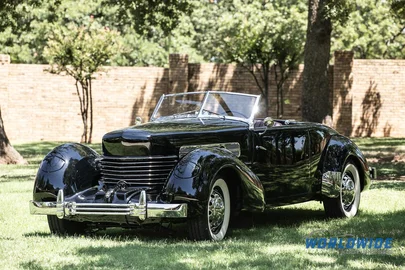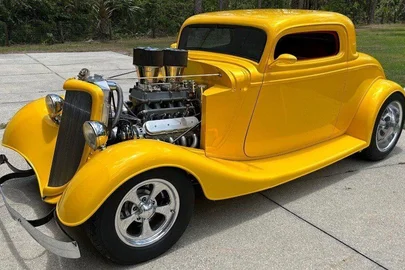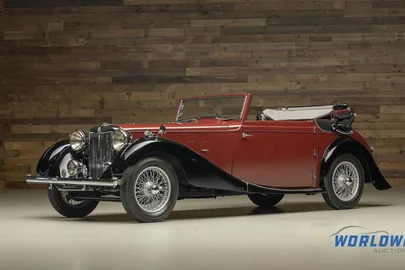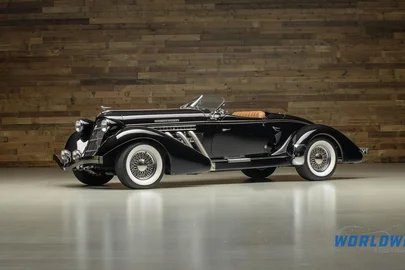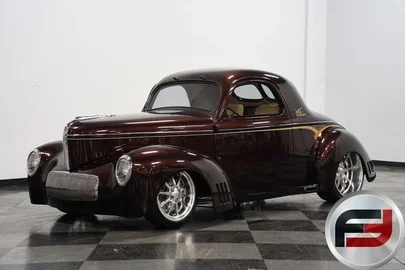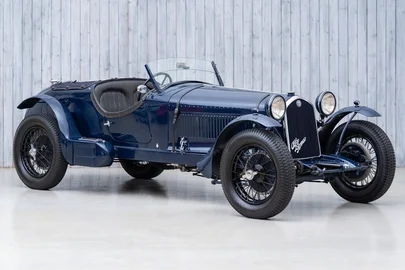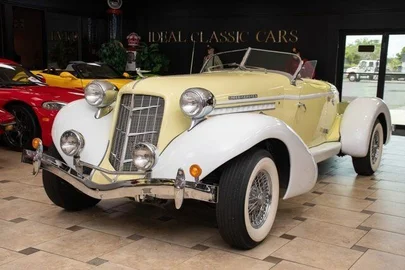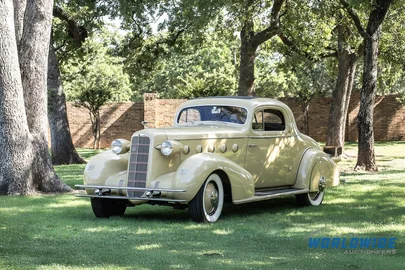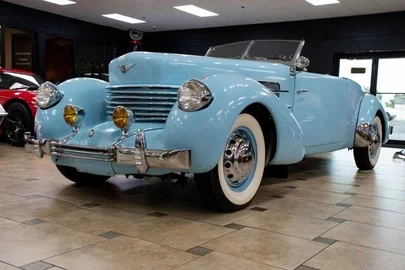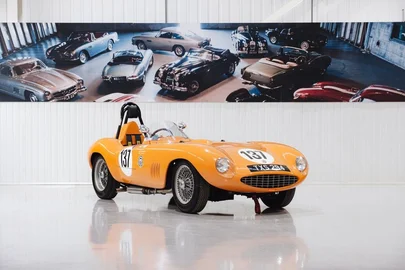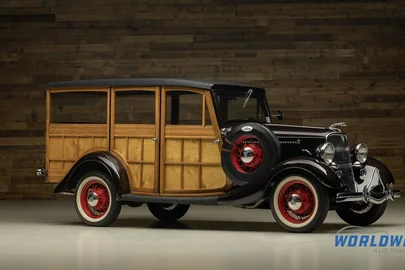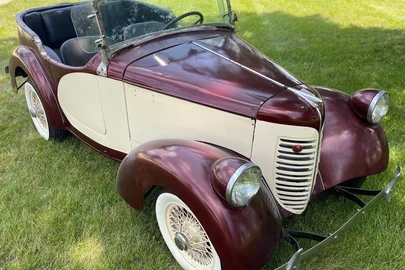
1938' Mercedes-Benz 540K
Report This Ad!Rate This!Bookmark This
NegotiablePublished 19 October 2018ID: GxOP3x
Expired
7 years, 2 months ago
7 years, 2 months ago
Information from the owner
Body: Sedan
Age: 80 years
Exterior color: Silver
Seller's comments about 1938' Mercedes-Benz 540K
Mercedes-Benz 540K Kabriolet B 1939 WWII (Whermacht)car.
Complete car for restoration. The main parts Engine and Chassis, transmission, Suspension are restored.
Mercedes-Benz 540K (type W24) is a car built by the German firm Mercedes-Benz from 1935 to 1940.
Introduced at the 1936 Paris Motor Show, the Friedrich Geiger designed car was a development to the 500K, itself a development of the SSK. Available as a two-seater cabriolet, four seater coupé or seven seater limousine with armoured sides and armoured glass, it was one of the largest cars of the time.
The straight-8 cylinder engine of the 500K was enlarged in displacement to 5,401 cubic centimetres (329.6 cu in), It was fed by twin pressurized updraft carburetors, developing a 115 hp (86 kW). In addition, there was an attached Roots supercharger, which could either be engaged manually for short periods, or automatically when the accelerator was pushed fully to the floor.This increased power to 180 hp (130 kW), enabling a top speed of 170 kilometres per hour (110 mph).
Power was sent to the rear wheels through a four-speed or optional five speed manual gearbox that featured synchromesh on the top three gears. Vacuum-assisted hydraulic brakes kept the car under the driver's control.
The 540K had the same chassis layout at the 500K, but was significantly lightened by replacing the girder-like frame of the 500K with oval-section tubes - an influence of the Silver Arrows racing campaign.
To meet individual wishes of customers, three chassis variants were available as for the 500K: two long versions with a 3,290 mm (130 in) wheelbase, differing in terms of powertrain and bodywork layout; and a short version with 2,980 mm (117 in). The long variant, termed the normal chassis with the radiator directly above the front axle, served as the backbone for the four-seater cabriolets, the 'B' (with four side windows) and 'C' (with two side windows), and for touring cars and sedans. The shorter chassis was for the two-seater cabriolet 'A,' set up on a chassis on which radiator, engine, cockpit and all rearward modules[clarification needed] were moved 185 mm (7.3 in) back from the front axle.
The Sindelfingen factory employed 1,500 people to create the 540K, and allowed a great deal of owner customisation, meaning only 70 chassis were ever bodied by independent builders. Owners included Jack L. Warner of Warner Brothers film studios.
With the outbreak of World War II in 1939, the proposed further boring-out of the engine to 5,800 cubic centimetres (5.8 l) for a 580K was aborted, probably after only one such car was made. Chassis production ceased in 1940, with the final 2 being completed that year, and earlier chassis were still being bodied at a steady rate during 1940, with smaller numbers being completed in the 1941–1943 period. Regular replacement bodies were ordered in 1944 for a few cars.
Complete car for restoration. The main parts Engine and Chassis, transmission, Suspension are restored.
Mercedes-Benz 540K (type W24) is a car built by the German firm Mercedes-Benz from 1935 to 1940.
Introduced at the 1936 Paris Motor Show, the Friedrich Geiger designed car was a development to the 500K, itself a development of the SSK. Available as a two-seater cabriolet, four seater coupé or seven seater limousine with armoured sides and armoured glass, it was one of the largest cars of the time.
The straight-8 cylinder engine of the 500K was enlarged in displacement to 5,401 cubic centimetres (329.6 cu in), It was fed by twin pressurized updraft carburetors, developing a 115 hp (86 kW). In addition, there was an attached Roots supercharger, which could either be engaged manually for short periods, or automatically when the accelerator was pushed fully to the floor.This increased power to 180 hp (130 kW), enabling a top speed of 170 kilometres per hour (110 mph).
Power was sent to the rear wheels through a four-speed or optional five speed manual gearbox that featured synchromesh on the top three gears. Vacuum-assisted hydraulic brakes kept the car under the driver's control.
The 540K had the same chassis layout at the 500K, but was significantly lightened by replacing the girder-like frame of the 500K with oval-section tubes - an influence of the Silver Arrows racing campaign.
To meet individual wishes of customers, three chassis variants were available as for the 500K: two long versions with a 3,290 mm (130 in) wheelbase, differing in terms of powertrain and bodywork layout; and a short version with 2,980 mm (117 in). The long variant, termed the normal chassis with the radiator directly above the front axle, served as the backbone for the four-seater cabriolets, the 'B' (with four side windows) and 'C' (with two side windows), and for touring cars and sedans. The shorter chassis was for the two-seater cabriolet 'A,' set up on a chassis on which radiator, engine, cockpit and all rearward modules[clarification needed] were moved 185 mm (7.3 in) back from the front axle.
The Sindelfingen factory employed 1,500 people to create the 540K, and allowed a great deal of owner customisation, meaning only 70 chassis were ever bodied by independent builders. Owners included Jack L. Warner of Warner Brothers film studios.
With the outbreak of World War II in 1939, the proposed further boring-out of the engine to 5,800 cubic centimetres (5.8 l) for a 580K was aborted, probably after only one such car was made. Chassis production ceased in 1940, with the final 2 being completed that year, and earlier chassis were still being bodied at a steady rate during 1940, with smaller numbers being completed in the 1941–1943 period. Regular replacement bodies were ordered in 1944 for a few cars.
